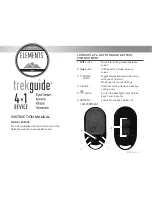
3.
Federal Requirements
- The location of the claim must be distinctly marked on the ground
so that its boundaries can be readily traced. All records of mining claims shall contain the
name, or names of the locators, the date of the location and such a description of the claim
or claims located by reference to some natural object or permanent monument as will iden
tify the claim.
4.
State Requirements
- Each mining district may make regulations not in conflict with the
laws of the United States, or with the laws of the state or territory in which the district is
situated governing the location, manner of recording and amount of work necessary to hold
position of a mining claim. This means the details of location are left to each state.
5.
Type of Claims
- There are four types of claims: lode claims, placer claims, mill sites, and
tunnel sites.
Only lode claims are discussed here
.
6.
Lode Claims
- A lode is defined as a zone or belt of mineralized rock lying within
boundaries clearly separating it from the neighboring rock. The dimensions of a lode claim
are a maximum of 1,500 feet along the lode or vein, and no more than 300 feet to either
side of the vein; end lines must be parallel.
Following, is an example of state regulations -- Nevada lode claim location requirements.
1. Erect a
discovery monument
at the point of discovery, and post thereon a
location notice
containing: (a) the name of the claim, (b) the name and mailing address of the locator, (c)
the date of location, (d) the number of linear feet along the vein each way from the
discovery monument, with the width claimed on either side of the vein, and (e) the general
course of the vein. (NRS 517.010)
2. All monuments must consist of (a) a tree cut of 3 or more feet above the ground and blazed,
(b) a rock pile 3 or more feet in height, or (c) a 4-inch diameter post at least 4 1/2 feet in
length set 1 foot in the ground. (NRS 517.030)
3. Within 20 days of posting the location notice, mark the boundaries of the claim by placing
monuments at the four corners and center of each side line. (NRS 517.030)
4. Within 90 days of posting the location notice, prepare two copies of a claim map (scale
of 500 feet to the inch) showing the position of the claim monuments, the relationship
of the claim monuments and the relationship of the claim group to a survey corner, or claim
8.3 Inclination
1. Position GEO on its side and on top of the object with the vernier down. (Fig 35)
2. Rotate vernier adjustment until the bubble is centered in the long level.
3. Read inclination in degrees or % grade.
If you were to discover gold, silver, or another valuable mineral deposit, you would want to
“stake a claim”. It would be necessary to construct a map of your claim, and tie (locate) your
claim relative to some known position. Your Brunton GEO transit is ideally suited for this job,
since it is a modification of the same instrument used by geologists, mining engineers for
prospecting and mapping around the world, since 1896.
9.1 Laws Governing Prospecting
In 1872 the General Mining Laws were enacted, and since then more laws have been passed
governing the western United States.
Currently, state laws vary widely and the federal
laws concerning mining claims are quite vague. A discussion of the law is beyond the
scope of this manual and it is strongly advised that you contact your state and federal
agencies for information concerning “staking a claim”.
For a basic understanding, following is general information on mining claims.
RULES AND LAWS MAY HAVE CHANGED.
1.
Lands Open to Mining Claims
- Lands available for mining claims can be determined by
examining records from the Federal Land Office and the U.S. Bureau of Land Management
(BLM), for your state. Generally, mining claims are limited to western states, where public
land still exists. This includes public lands administered by the U.S. Forest Service, and
U.S. BLM. It excludes national parks, monuments, state owned land and privately owned
lands.
2.
Qualification
-- An individual must be a United States citizen, or one who has declared
their intention to become a citizen. A corporation must be organized under the laws of the
United States, or one of the fifty states. There are no restrictions as to age or residency.
20
19
9 -- Prospecting
Summary of Contents for GeoTransit
Page 15: ......



















